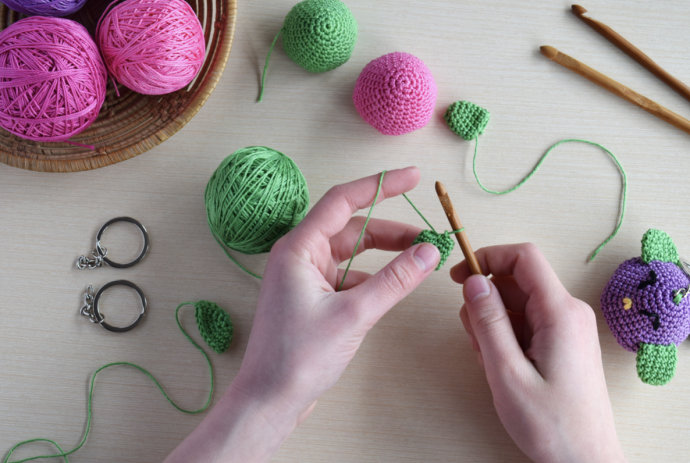Crochet Problem Solving: Flat Shapes

Learning to crochet is hard. When you’re first learning to crochet, you might be so focused on making the correct stitches that you don’t notice your projects turning out not as flat as you wish. This article will go over the most common crochet mistakes for beginners and answer the most common questions. Don't get discouraged! Crocheting mistakes are easy to make and even easier to avoid.
1. I followed the chart, but my piece isn’t flat. What did I do wrong?
This is a common problem. Here are some things you can check:
If your crochet is curling into a bowl shape:
You may not have started with enough stitches, or you may not have made enough increases per round.
Even though you are increasing sufficiently, you may be working the stitches too tightly. Loosen up a bit or try a larger hook. It is even okay to change hook sizes when stitches change within the same motif, if that’s what it takes to make it lie flat.
If the motif is ruffling:
You may have too many increases per round.
If after counting your stitches, you find your numbers are right, you may be working the stitches too loosely. Try a smaller hook.
Consider making each stitch slightly taller. For example, try an extended double crochet in place of a double crochet.
While the charts give general guidelines for working a flat motif, you may find you need to bend the rules a bit based on your crocheting style and personal preferences. Be assured that it is okay to add or subtract increases as you work, in order to have the piece lie perfectly flat. This is especially true on the bigger rounds when working larger pieces.
2. Can I use more than one kind of stitch when I’m working a flat motif?
You can certainly mix stitch heights on your motifs. Just remember to change the number of increases accordingly. For example, you start a circle using double crochet stitches, increasing 8 stitches each round. If on one round, you want to use treble crochet, you must increase 18 times in that round in order to maintain a flat circle.
3. Is there another way to keep my pieces flat when I’m working in the round?
If you prefer to be more relaxed about your stitching, you can be. Keeping in mind the guidelines above, experiment with doubling the increases every other round, or in some other arrangement. Remember that you can use a combination of chains and stitches for your increases, and that you can use a chain-space in place of a stitch, as for a granny square. Just be sure to stop at the end of every round, place your piece flat on a table, look at the outside edge, and check to see that it remains flat. Be honest with yourself!
Turning a blind eye won’t help: If your piece is not flat on Round 3, it won’t correct itself on Round 6.
If you notice that the last round you worked is not quite right, sometimes it is possible to make adjustments on the following round without ripping out the problem round. If you aren’t happy with the adjustment round, stop! Rip out both rounds and get it right before continuing. (Voice of Experience: From someone who abhors ripping out stitches — sometimes it just has to be done.)
4. Where do I put my hook when working in rounds?
When you work back and forth, turning the work at the end of each row, you put your hook into loops lying sideways just slightly to the left of the next stitch. On the other hand, when working in rounds without turning, you put your hook into loops lying sideways just slightly to the right of the next stitch.
Note: If you turn your work to the other side, you’ll see this is the same spot you’ve been putting it in when working back and forth. The difference is that you are always seeing the right side of the fabric when you work in rounds.
5. How do I squeeze in all the stitches I need in the first round?
Be sure you are not letting the bases of the stitches overlap one another. When they overlap, you can’t slide them around the ring easily. If they aren’t overlapping, yet there still is not room for them all, add one more chain to your beginning round or try one of the alternate beginnings described below.
6. What can I do to improve the slip stitch join at the end of a round?
If you think the join is sloppy, try this alternate method of joining: Work to the end of the round, but before joining with a slip stitch, remove the hook from the loop. Insert the hook into the spot you want to join as if to make a stitch, pull up the loop you just dropped, and continue. If you still don’t like the way it looks, try it again, inserting the hook into the stitch from back to front and pulling through the loop.
7. Why does my circle look like a spiral instead of separate rounds?
When you work the rounds, you are probably failing to join the last stitch of round to top of chain at beginning of round. Although you sometimes may want to crochet a spiral, if not, be sure that you start each round with a beginning chain in order to raise hook to correct height. This beginning chain counts as a stitch. When you’ve reached the end of the round and made the appropriate increases, join round with a slip stitch to top of beginning chain.
